-
ARTÍCULO ORIGINAL13/12/2024
Nurses’ experience regarding patient safety in mobile pre-hospital care
Revista Brasileira de Enfermagem. 2024;77(5):e20230529
Resumen
ARTÍCULO ORIGINALNurses’ experience regarding patient safety in mobile pre-hospital care
Revista Brasileira de Enfermagem. 2024;77(5):e20230529
DOI 10.1590/0034-7167-2023-0529
Visualizações0Ver maisABSTRACT
Objectives:
to understand nurses’ experience regarding patient safety in mobile pre-hospital care.
Method:
a qualitative, exploratory and descriptive study, conducted with nurses active in mobile pre-hospital care services. Semi-structured interviews were conducted, audio-graved and submitted to Bardin’s content analysis.
Results:
from four thematic categories established, nurses reported the care and management skills necessary to work in this service. They demonstrated a commitment to ensuring safe care for patients, staff and spectators. They highlighted the actions taken to prevent and mitigate incidents. However, they based their experiences on practice protocols and individual actions, expressing the need to improve knowledge about patient safety.
Final Considerations:
mobile pre-hospital care nurses’ experience in relation to patient safety was limited, suggesting the need for training on the subject, alignment of work processes and implementation of strategies, aiming to guarantee safe care.
-
ARTÍCULO ORIGINAL13/12/2024
Stress in nursing workers caring for people with COVID-19
Revista Brasileira de Enfermagem. 2024;77(5):e20230542
Resumen
ARTÍCULO ORIGINALStress in nursing workers caring for people with COVID-19
Revista Brasileira de Enfermagem. 2024;77(5):e20230542
DOI 10.1590/0034-7167-2023-0542
Visualizações1Ver maisABSTRACT
Objectives:
to analyze stress from the perspective of nursing workers caring for people with COVID-19 in a public hospital in the Recôncavo region of Bahia.
Methods:
this is an exploratory qualitative study, conducted through semi-structured interviews. The data were analyzed using word clouds, similarity trees, and content analysis.
Results:
nursing workers were exposed to stress while attending to patients with COVID-19. The reported stressors in the workplace included: work overload, lack of planning, speed in performing tasks, fatigue, lack of participation in decision-making, lack of support from management, technological changes, excessive responsibility without preparation, interpersonal conflicts, and professional undervaluation.
Conclusions:
exposure to these stressors leads to emotional exhaustion and demotivation, which were intensified during the COVID-19 pandemic.
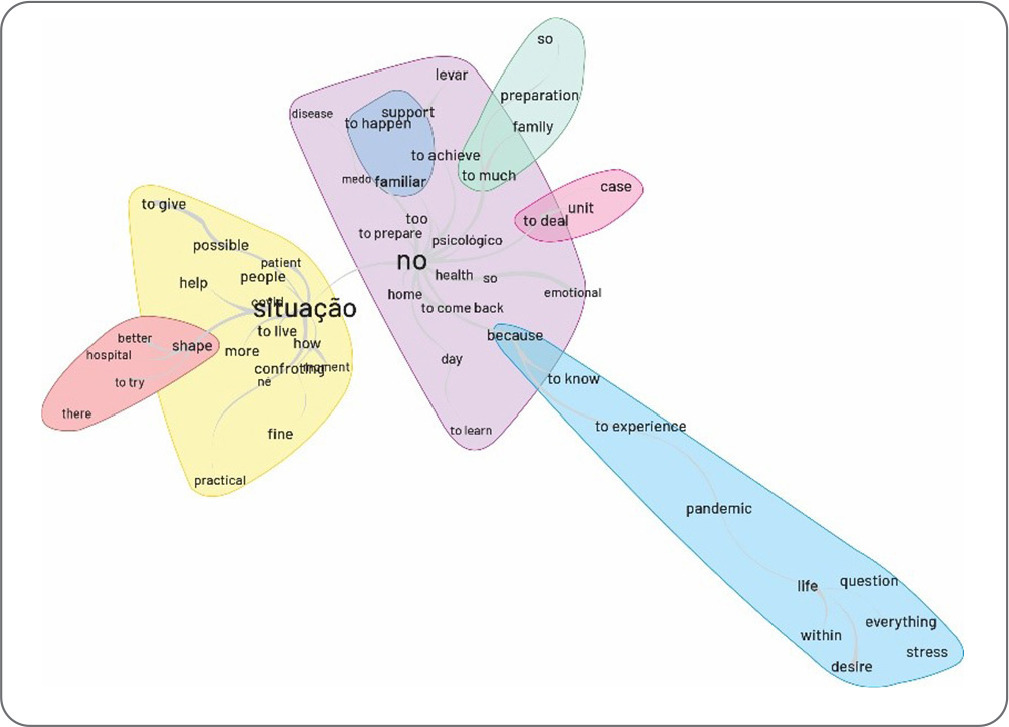
-
ARTÍCULO ORIGINAL13/12/2024
Knowledge and attitudes of nursing students regarding the sexuality of older adults: a quasi-experimental study
Revista Brasileira de Enfermagem. 2024;77(5):e20240011
Resumen
ARTÍCULO ORIGINALKnowledge and attitudes of nursing students regarding the sexuality of older adults: a quasi-experimental study
Revista Brasileira de Enfermagem. 2024;77(5):e20240011
DOI 10.1590/0034-7167-2024-0011
Visualizações0Ver maisABSTRACT
Objectives:
to compare the knowledge and attitudes of nursing students regarding sexual behavior and sexually transmitted infections (STIs) in older adults before and after an educational intervention.
Methods:
this quasi-experimental study involved a convenience sample of 45 nursing students from a public university, conducted in three stages: pre-intervention, intervention, and post-intervention. A questionnaire was used to assess sociodemographic characteristics, academic training, and knowledge and attitudes on the topic. The intervention was an educational web conference. Paired t-test and Wilcoxon test were used for data analysis.
Results:
there was a statistically significant difference in the knowledge and attitude scores of nursing students before and after the educational intervention (p < 0.001). A significant increase was observed in the knowledge score (from 9.3 to 12.2) and attitude score (from 108 to 117.2) in the post-intervention phase.
Conclusions:
the knowledge of nursing students regarding the sexuality of older adults increased after the educational intervention, and their attitudes on the subject became more positive.
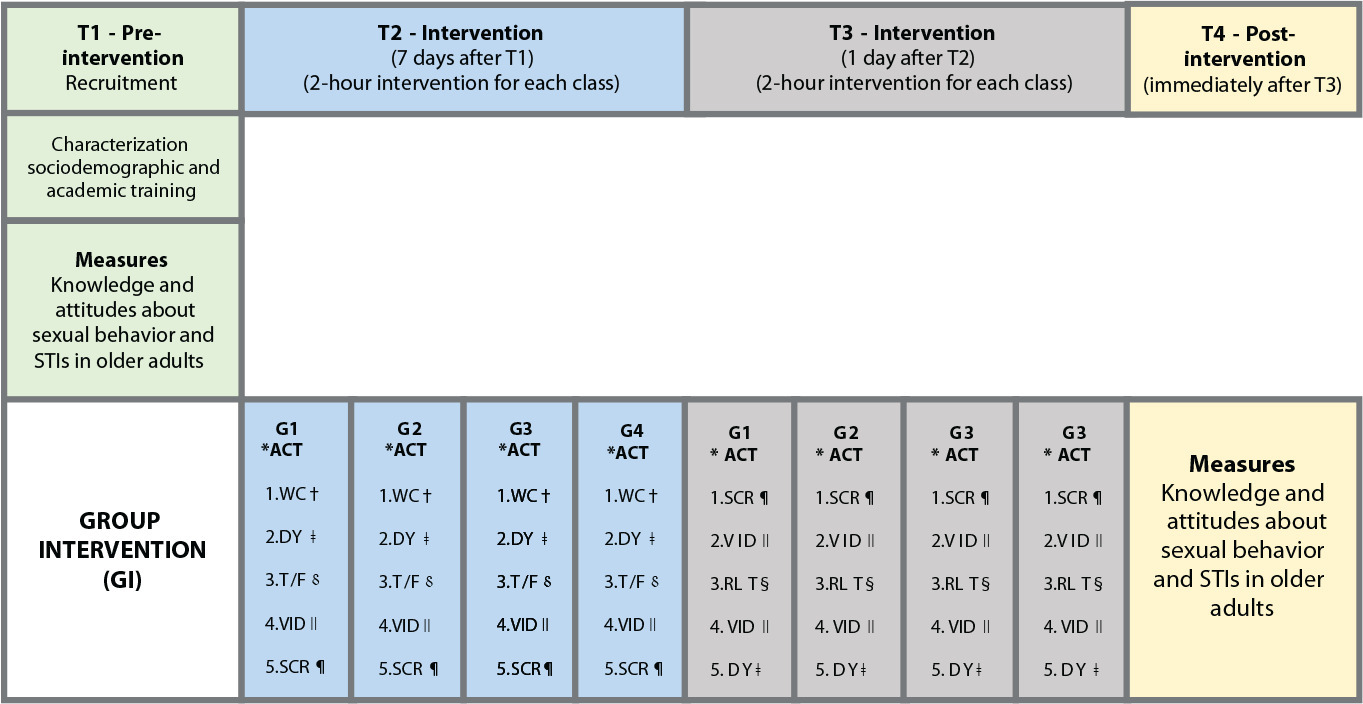
-
ARTÍCULO ORIGINAL13/12/2024
Educational booklet on labor and delivery: validity study
Revista Brasileira de Enfermagem. 2024;77(5):e20240138
Resumen
ARTÍCULO ORIGINALEducational booklet on labor and delivery: validity study
Revista Brasileira de Enfermagem. 2024;77(5):e20240138
DOI 10.1590/0034-7167-2024-0138
Visualizações2Ver maisABSTRACT
Objectives:
to develop and validate an educational booklet on labor and delivery for pregnant women.
Methods:
this methodological study involved constructing and validating a booklet based on Echer’s framework. We used the Content Validity Index and Cronbach’s alpha for content and face validation, selecting judges according to Fering’s criteria. We then conducted a clinical validation with the target population.
Results:
the booklet, developed based on evidence from an integrative review and validated by judges and the target audience, achieved global Content Validity Index of 0.919 and 0.913, respectively. After clinical validation with 22 pregnant women, it included 28 topics and 48 pages, with illustrations by a graphic designer.
Conclusions:
expert judges and the target audience considered this educational technology valid, deeming it a relevant tool for promoting the health of pregnant women.
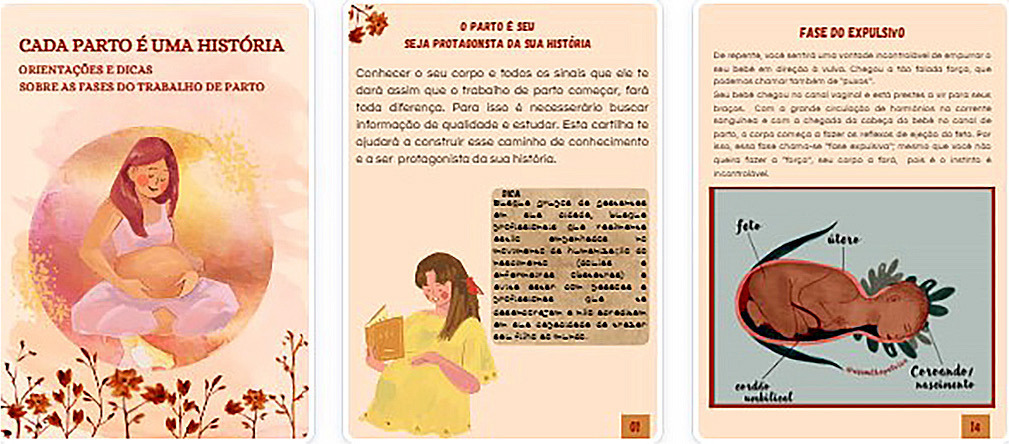
-
08/12/2024
Contexto ibero-americano da enfermagem: construindo e compartilhando conhecimento
Revista Brasileira de Enfermagem. 2024;77(1):e770101
Resumen
Contexto ibero-americano da enfermagem: construindo e compartilhando conhecimento
Revista Brasileira de Enfermagem. 2024;77(1):e770101
DOI 10.1590/0034-7167.2024770101pt
Visualizações0Na próxima semana, acontecerão dois grandes eventos científicos em Madri e Granada (Espanha). Serão atividades internacionais, específicas e de forma muito especial, embora não exclusivas do campo ibero-americano, organizadas e desenvolvidas por duas sociedades científicas de enfermagem muito importantes, como a Associação de Enfermagem Comunitária (AEC) e a Associação Latino-Americana de Escolas e Faculdades de […]Ver mais -
ARTÍCULO ORIGINAL08/12/2024
Initial nipple damages in breastfeeding women: analysis of photographic images and clinical associations
Revista Brasileira de Enfermagem. 2024;77(1):e20220773
Resumen
ARTÍCULO ORIGINALInitial nipple damages in breastfeeding women: analysis of photographic images and clinical associations
Revista Brasileira de Enfermagem. 2024;77(1):e20220773
DOI 10.1590/0034-7167-2022-0773
Visualizações0Ver maisABSTRACT
Objective:
to analyze the initial nipple damage degree by breastfeeding practice and to associate findings with clinical manifestations of breastfeeding women.
Methods:
a retrospective, cross-sectional study with primary data and photographic images database from two randomized clinical trials. Photographic images were analyzed by two independent evaluators using the Nipple Trauma Score. For analysis, the chi-square, Mann-Whitney tests and Kappa coefficient were applied.
Results:
115 breastfeeding women and their respective 186 photographic images were analyzed. The degree of agreement of evaluators using the Nipple Trauma Score was 93.6%. The nipple pain score during breastfeeding was moderate and compromised more than 25% of the nipple surface area.
Conclusions:
assistance to breastfeeding women should prioritize nipple pain intensity instead of the nipple damage size.
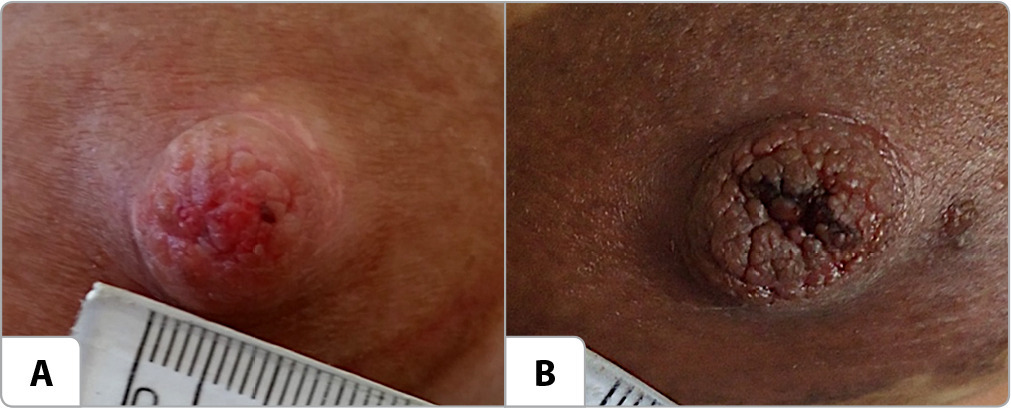
-
ARTÍCULO DE REVISIÓN08/12/2024
Interventions for Strengthening General Self-Efficacy Beliefs in College Students: An Integrative Review
Revista Brasileira de Enfermagem. 2024;77(1):e20230192
Resumen
ARTÍCULO DE REVISIÓNInterventions for Strengthening General Self-Efficacy Beliefs in College Students: An Integrative Review
Revista Brasileira de Enfermagem. 2024;77(1):e20230192
DOI 10.1590/0034-7167-2023-0192
Visualizações0Ver maisABSTRACT
Objective:
To assess the evidence regarding the effectiveness of interventions aimed at strengthening self-efficacy beliefs in college students.
Methods:
Integrative Review conducted on the Lilacs, PubMed, CinahL, Cochrane Collaboration Databases, Scopus, and PsycInfo databases. The methodological quality of the studies was assessed using tools proposed by the Joanna Briggs Institute, and the results were analyzed descriptively.
Results:
Out of the 10 selected studies, six demonstrated that interventions aimed at strengthening self-efficacy were effective (Levels of Evidence II and III), and four revealed contrary results (Levels of Evidence I and II). Programs aimed at enhancing self-efficacy should include content on positive mental health, psychoeducation strategies, cover a period of eight to twelve weeks, and consider the completion of homework assignments.
Conclusion:
The synthesis of evidence pointed to pathways for building an effective self-efficacy strengthening program to be implemented in universities.
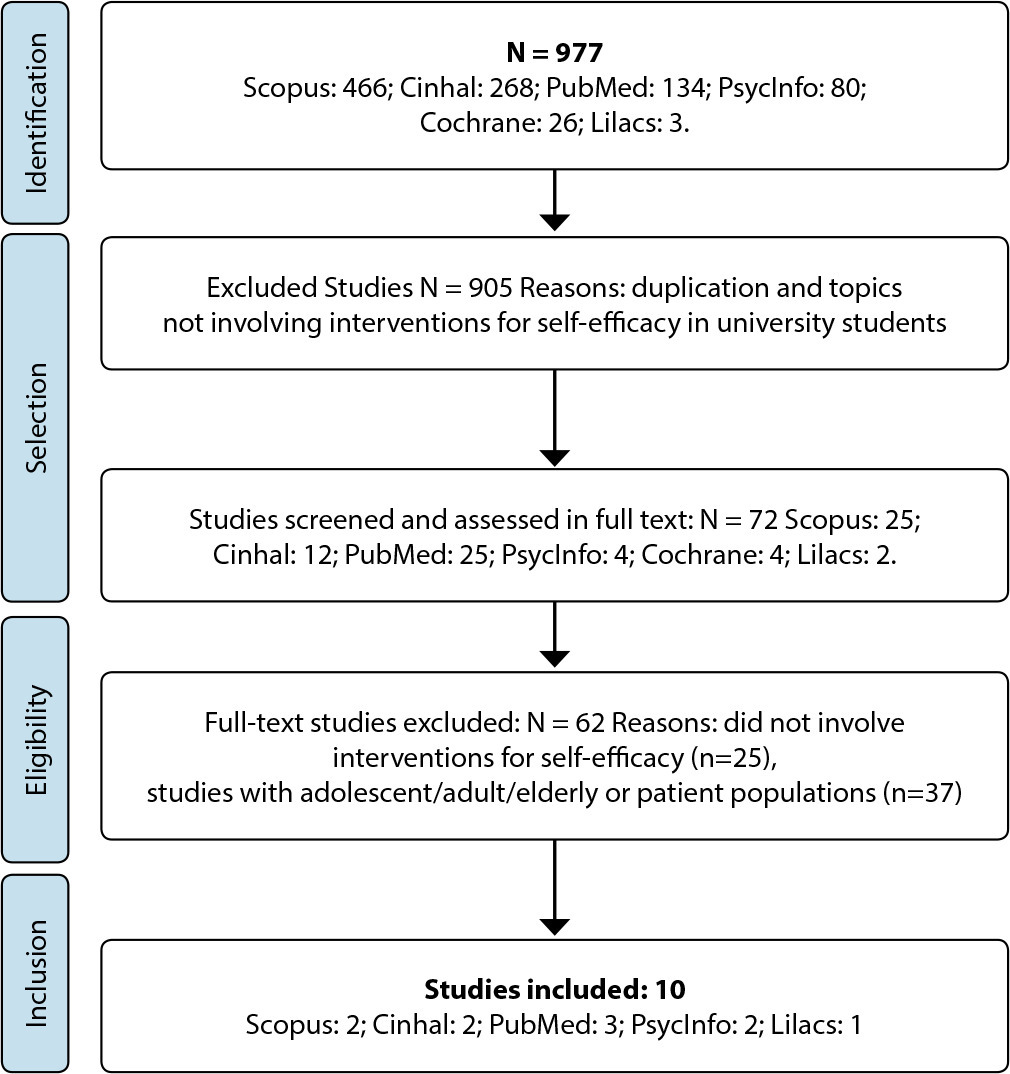
-
ARTÍCULO DE REVISIÓN08/12/2024
Common mental disorders in hematopoietic stem cell transplant patients: a scoping review
Revista Brasileira de Enfermagem. 2024;77(1):e20220581
Resumen
ARTÍCULO DE REVISIÓNCommon mental disorders in hematopoietic stem cell transplant patients: a scoping review
Revista Brasileira de Enfermagem. 2024;77(1):e20220581
DOI 10.1590/0034-7167-2022-0581
Visualizações0Ver maisABSTRACT
Objective:
to map common recurrent mental disorders in patients undergoing hematopoietic stem cell transplantation.
Methods:
this is a scoping review carried out in January 2022 in electronic databases and repositories of dissertations and thesis. Studies that answered the research question, met the objective of the study and were available in full electronically, in any language, were included.
Results:
the sample consisted of 28 studies, 14 of which were published in the United States of America. The common mental disorders found were depressive, anxiety, post-traumatic stress and mood disorders. Twenty symptoms were mentioned, among the most prevalent are fatigue and sleep disorders/insomnia.
Conclusions:
the difficulty and importance of carrying out the differential diagnosis of these disorders were highlighted, since their symptoms can be confused with other health problems and have a strong potential to interfere with patients’ evolution.
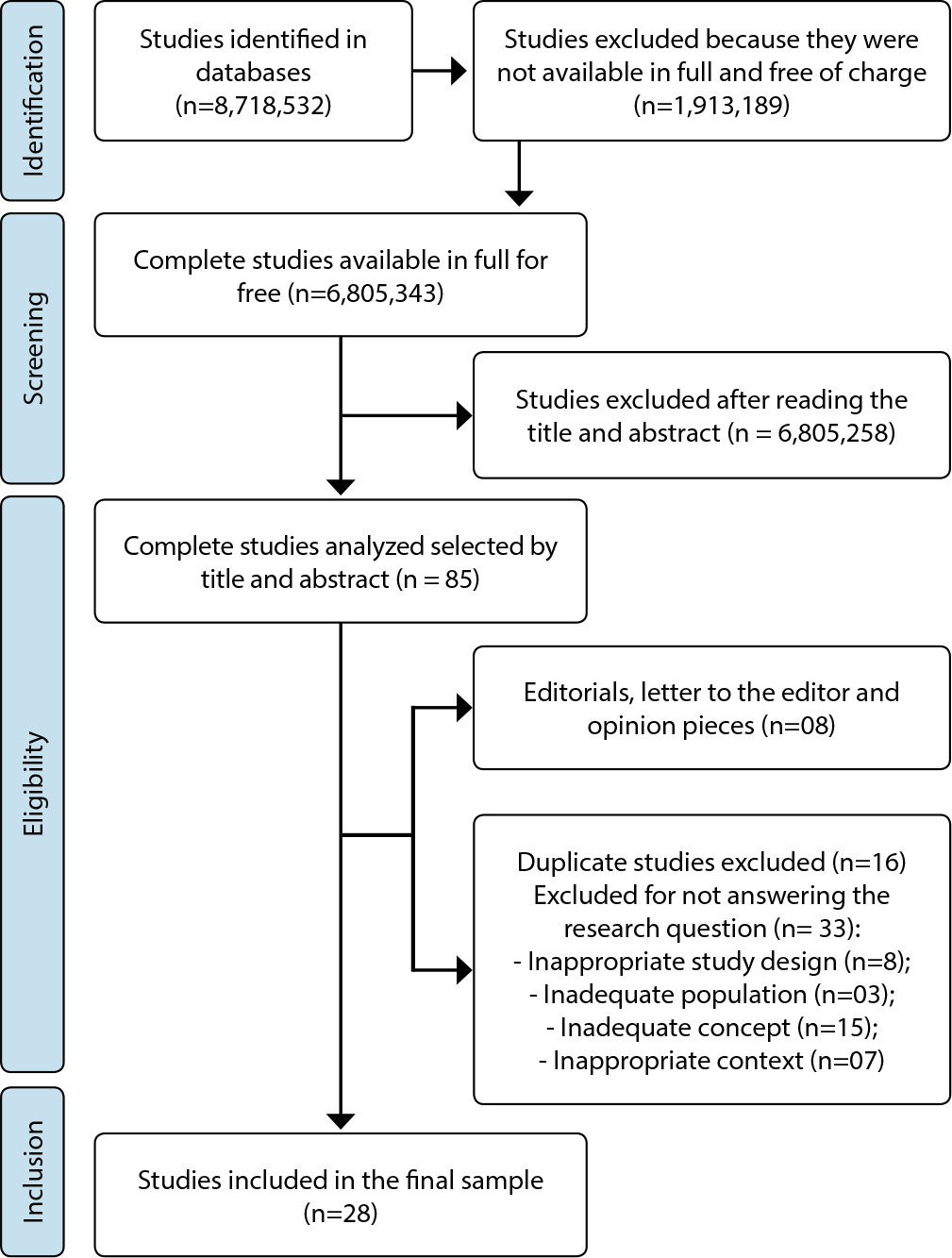
-
ARTÍCULO ORIGINAL21/10/2019
Occupational stress and engagement in primary health care workers
Revista Brasileira de Enfermagem. 2019;72(6):1580-1587
Resumen
ARTÍCULO ORIGINALOccupational stress and engagement in primary health care workers
Revista Brasileira de Enfermagem. 2019;72(6):1580-1587
DOI 10.1590/0034-7167-2018-0681
Visualizações0Ver maisABSTRACT
Objective:
To evaluate levels of occupational stress and work engagement among primary health care workers.
Method:
A descriptive, correlational and transversal study was carried out in a small municipality in the countryside of São Paulo, with a non-probabilistic sample of convenience, with 85 workers. Three self-applied instruments were used: one developed by researchers, containing sociodemographic variables; Work Stress Scale (WSS) and Utrech Work Engagement Scale (UWES).
Results:
Prevalence of women (72.6%), 40 years old or more (45.9%), 4 years and 4 months of mean working time in primary care. Thirty-one workers (36.5%) presented significant stress (scores ≥2.5). Work engagement showed a mean of 4.1 (±1.2) to 4.4 (±1.4), classified as high in all dimensions. Occupational stress and work engagement correlated negatively.
Conclusion:
Workers presented high levels of work engagement; more than one-third had significant occupational stress. Workers with high levels of occupational stress tend to have lower work engagement.
-
ARTÍCULO ORIGINAL01/07/2020
Patient safety culture: perception of nursing professionals in high complexity institutions
Revista Brasileira de Enfermagem. 2020;73(5):e20190174
Resumen
ARTÍCULO ORIGINALPatient safety culture: perception of nursing professionals in high complexity institutions
Revista Brasileira de Enfermagem. 2020;73(5):e20190174
DOI 10.1590/0034-7167-2019-0174
Visualizações1Ver maisABSTRACT
Objectives:
to analyze the perception of nursing professionals about patient safety culture in three highly complex hospital institutions.
Methods:
descriptive and quantitative study with professionals working in care. The Hospital Survey on Patient Safety Culture questionnaire was applied, classifying its dimensions according to the percentage of positive responses (strengthened: ≥75.0%; potential for improvement: <75.0% to> 50.0%; weakened: ≤50.0%).
Results:
four hundred sixty-seven professionals (79.6%), mostly women (88.4%), nursing technicians/assistants (57.2%), 20 to 39 years (60.8%), less than five years in the institution (57.8%) and exclusive bond (79.2%) participated in the study. Safety culture was considered fragile, seven dimensions assessed as such, highlighting “Openness to communication” and “Non-punitive responses to errors” with <30.0% positive responses.
Conclusions:
evidence of the need for discussion of the subject and strategies for change that promote quality and safety of care.
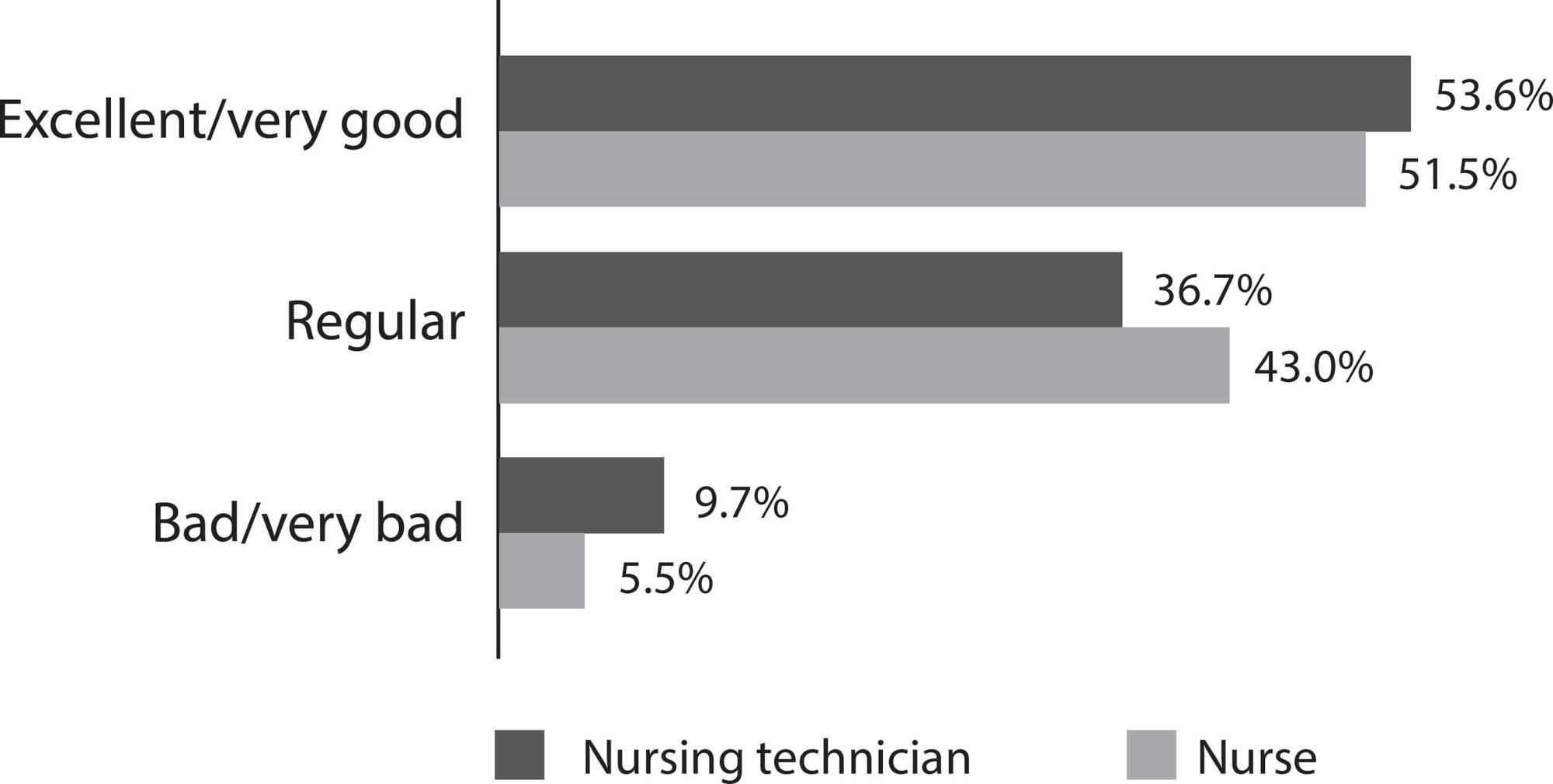
-
ARTÍCULO DE REVISIÓN06/11/2020
Cuidado transicional aos cuidadores de idosos dependentes: revisão integrativa da literatura
Revista Brasileira de Enfermagem. 2020;73:e20200394
Resumen
ARTÍCULO DE REVISIÓNCuidado transicional aos cuidadores de idosos dependentes: revisão integrativa da literatura
Revista Brasileira de Enfermagem. 2020;73:e20200394
DOI 10.1590/0034-7167-2020-0394
Visualizações0Ver maisRESUMO
Objetivo:
Identificar as necessidades dos cuidadores de idosos dependentes para o autocuidado na transição do hospital para casa.
Métodos:
Revisão integrativa que seguiu um protocolo pré-definido, realizada de março a maio de 2019, nas plataformas EBSCO, B-On, Scopus, Web of Science e Joanna Briggs Institute. Foram definidos descritores e critérios de elegibilidade para a amostra bibliográfica, que ficou constituída por dez artigos. Pela atualidade da evidência, limitou-se a pesquisa aos anos de 2015 a 2019.
Resultados:
As necessidades de cuidados transicionais para os cuidadores agrupam-se em cinco categorias: necessidades na transição para o papel de cuidador, necessidades de autocuidado dele próprio, necessidades de saúde, necessidades econômicas e necessidades sociais e comunitárias.
Considerações finais:
O cuidado transicional para os cuidadores deve ter dois focos de atenção, por parte dos enfermeiros: a gestão dos cuidados ao familiar dependente e a gestão das necessidades e dos cuidados ao próprio cuidador.
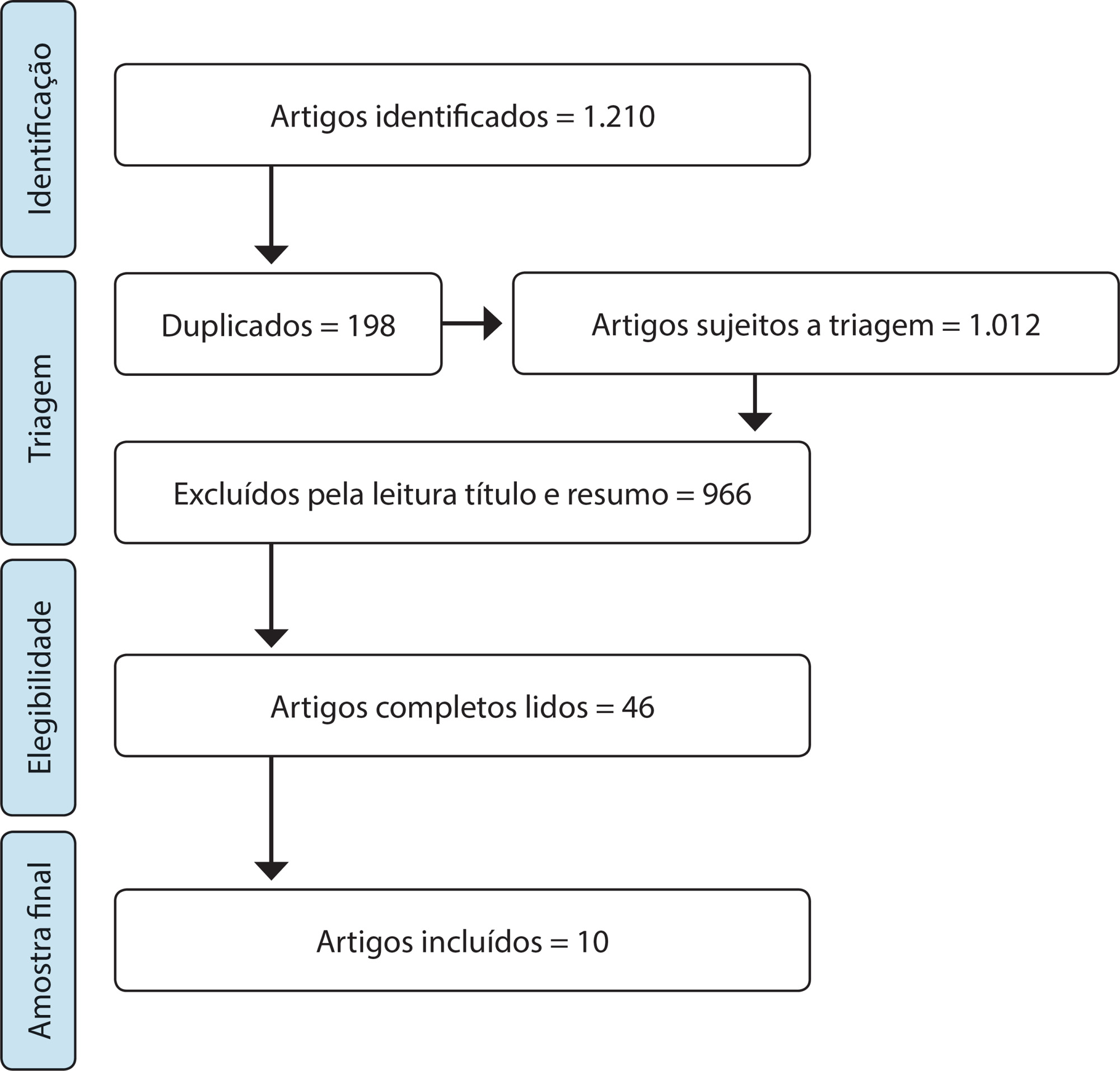
-
ARTÍCULO ORIGINAL24/05/2021
PEDCARE: validação de um aplicativo móvel sobre o autocuidado com o pé diabético
Revista Brasileira de Enfermagem. 2021;74:e20200856
Resumen
ARTÍCULO ORIGINALPEDCARE: validação de um aplicativo móvel sobre o autocuidado com o pé diabético
Revista Brasileira de Enfermagem. 2021;74:e20200856
DOI 10.1590/0034-7167-2020-0856
Visualizações0RESUMO
Objetivo:
descrever o processo de validação de aplicativo multimídia em plataforma móvel para a promoção de cuidado com os pés de pessoas com diabetes.
Método:
estudo de produção tecnológica, do tipo metodológico. O conteúdo e a aparência foram validados por 39 juízes (29 juízes na área de enfermagem e dez com experiência profissional em tecnologia da informação e comunicação e 15 pessoas do público-alvo).
Resultados:
os juízes na área de enfermagem possibilitaram a validação do material com Índice de Validade do Conteúdo total de 0,95, teste binomial não significativo para maioria dos itens e alfa de Cronbach de 0,92, juízes da área de tecnologia da informação e comunicação com Suitability Assessment of Materials de 99,2% e o público-alvo com Índice de Concordância de 98%.
Conclusão:
o aplicativo mostrou-se válido e confiável para uso na prática clínica como tecnologia educacional para promoção de cuidados com os pés de pessoas com diabetes.
Palavras-chave: Aplicativos MóveisDiabetes MellitusEducação em SaúdeEstudos de ValidaçãoPé DiabéticoVer mais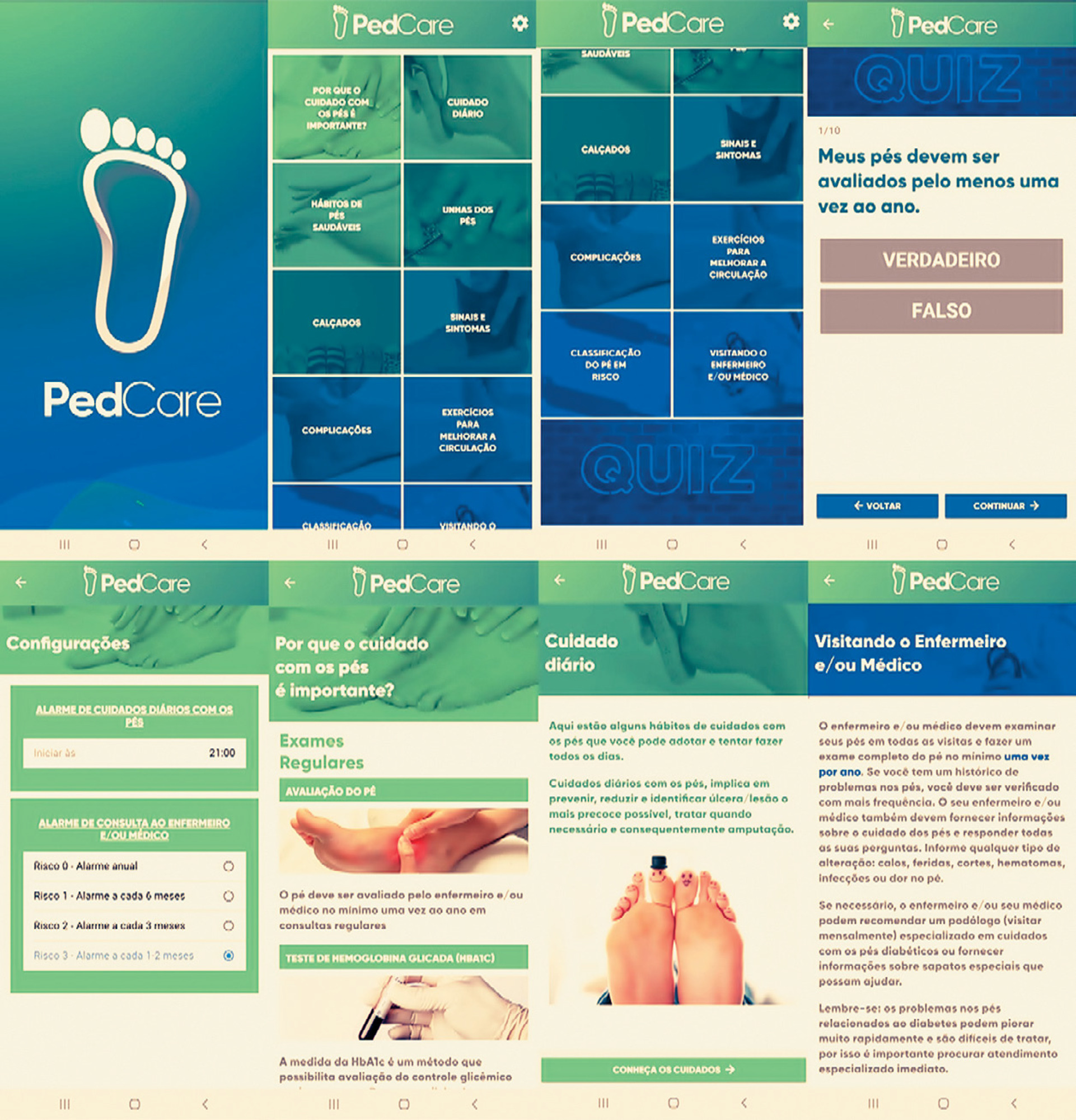
-
INFORME DE EXPERIENCIA09/04/2020
Implantação de algoritmo de inteligência artificial para detecção da sepse
Revista Brasileira de Enfermagem. 2020;73(3):e20180421
Resumen
INFORME DE EXPERIENCIAImplantação de algoritmo de inteligência artificial para detecção da sepse
Revista Brasileira de Enfermagem. 2020;73(3):e20180421
DOI 10.1590/0034-7167-2018-0421
Visualizações0RESUMO
Objetivos:
apresentar a experiência de enfermeiros com inovações tecnológicas computacionais no apoio à identificação precoce da sepse.
Métodos:
relato de experiência de pré e pós-implantação de algoritmos baseados em inteligência artificial para a prática clínica em um hospital filantrópico, no primeiro semestre de 2018.
Resultados:
descrevem a motivação, para criação e uso do algoritmo, o papel do enfermeiro no desenvolvimento e na implantação dessa tecnologia e os seus efeitos no processo de trabalho da enfermagem.
Considerações Finais:
inovações tecnológicas precisam contribuir para a melhoria das práticas profissionais em saúde. Assim, enfermeiros devem reconhecer seu papel em todas as etapas desse processo, de modo a garantir o cuidado seguro, efetivo, centrado no paciente. No caso apresentado, a participação dos enfermeiros no processo de incorporação tecnológica potencializa a rápida tomada de decisão na identificação precoce da sepse.
Palavras-chave: Fidelidade a DiretrizesInformática em EnfermagemInteligência Artificial SepseTomada de DecisõesVer mais -
ARTÍCULO DE REVISIÓN24/03/2021
Development of clinical competence in nursing in simulation: the perspective of Bloom’s taxonomy
Revista Brasileira de Enfermagem. 2021;74(1):e20200135
Resumen
ARTÍCULO DE REVISIÓNDevelopment of clinical competence in nursing in simulation: the perspective of Bloom’s taxonomy
Revista Brasileira de Enfermagem. 2021;74(1):e20200135
DOI 10.1590/0034-7167-2020-0135
Visualizações0Ver maisABSTRACT
Objectives:
to investigate the scientific evidence on the use of Bloom’s taxonomy for developing competence in nursing professionals and students in clinical simulation.
Methods:
integrative review of the National Library of Medicine (NLM), National Institutes of Health (NIH), Cumulative Index to Nursing and Allied Health Literature (CINAHL), Latin American and Caribbean Literature in Health Sciences (LILACS), Web of Science and SCOPUS databases, using the Rayyan application.
Results:
a total of 871 studies were identified; four composed the sample. The development of clinical competence occurred through the coordination of knowledge, skills, and attitudes. To develop the cognitive domain, the objectives of knowledge and comprehension of the Bloom’s taxonomy were mobilized. The psychomotor domain required development of the skills demanded by the proposed clinical care. The affective domain was developed through will and motivation to learn.
Conclusions:
it is possible to develop clinical competence in nursing by adopting Bloom’s taxonomy in each phase of clinical simulation.
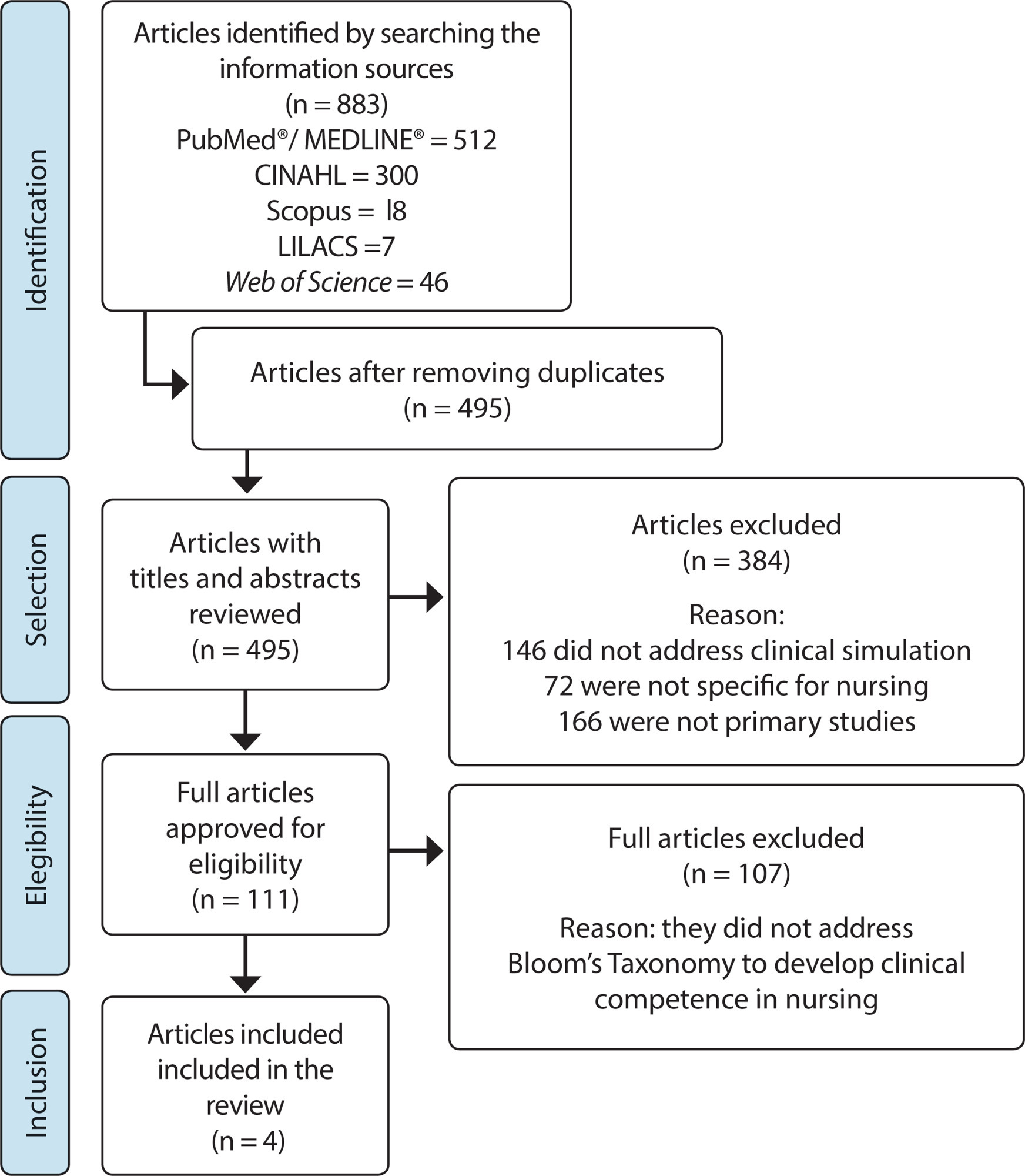
-
27/03/2020
Coronavirus 2020
Revista Brasileira de Enfermagem. 2020;73(2):e2020n2
Resumen
Coronavirus 2020
Revista Brasileira de Enfermagem. 2020;73(2):e2020n2
DOI 10.1590/0034-7167-2020730201
Visualizações0Las enfermedades infecciosas emergentes y reemergentes son desafíos constantes para la salud pública en todo el mundo. Los casos recientes de neumonía de causa desconocida en Wuhan, China, han llevado al descubrimiento de un nuevo tipo de Coronavirus (2019-nCoV), que son virus de RNA envueltos, comúnmente encontrados en humanos, otros mamíferos y aves, capaces de […]Ver mais -
ARTÍCULO ORIGINAL04/12/2020
Lesão por pressão relacionada ao uso de equipamentos de proteção individual na pandemia da COVID-19
Revista Brasileira de Enfermagem. 2020;73:e20200670
Resumen
ARTÍCULO ORIGINALLesão por pressão relacionada ao uso de equipamentos de proteção individual na pandemia da COVID-19
Revista Brasileira de Enfermagem. 2020;73:e20200670
DOI 10.1590/0034-7167-2020-0670
Visualizações0RESUMO
Objetivo:
Descrever prevalência e fatores associados da lesão por pressão relacionada ao uso de equipamentos de proteção individual durante a pandemia da COVID-19.
Métodos:
Estudo transversal realizado por meio de instrumento disponibilizado em redes sociais com 1.106 profissionais de saúde. Os dados foram analisados por meio de estatística descritiva e comparada, considerando valor de p < 0,05.
Resultados:
Houve prevalência de 69,4% para lesão por pressão relacionada ao uso do equipamento de proteção individual, com uma média de 2,4 lesões por profissional. Os fatores significativos foram: menores de 35 anos de idade, trabalhar e fazer uso de equipamentos de proteção individual por mais de seis horas no dia, em unidades hospitalares e sem o uso de insumos para proteção.
Conclusão:
A lesão por pressão relacionada ao uso de dispositivos médicos apresentou alta prevalência nessa população. O reconhecimento da lesão nesses profissionais possibilita avançar em estratégias de prevenção.
Palavras-chave: CoronavírusEquipamento de Proteção IndividualLesão por PressãoPandemiasPessoal de SaúdeVer mais
Búsqueda
Buscar en:
Nuvem de Tags
Adolescente (85) Atenção Primária à Saúde (239) COVID-19 (91) Criança (91) Cuidados de Enfermagem (269) Educação em Enfermagem (151) Educação em Saúde (139) Enfermagem (930) Enfermagem Pediátrica (86) Estudantes de Enfermagem (77) Estudos de Validação (131) Família (87) Idoso (208) Promoção da Saúde (99) Qualidade de Vida (104) Saúde do Trabalhador (86) Saúde Mental (145) Saúde Pública (82) Segurança do Paciente (150) Tecnologia Educacional (100)



